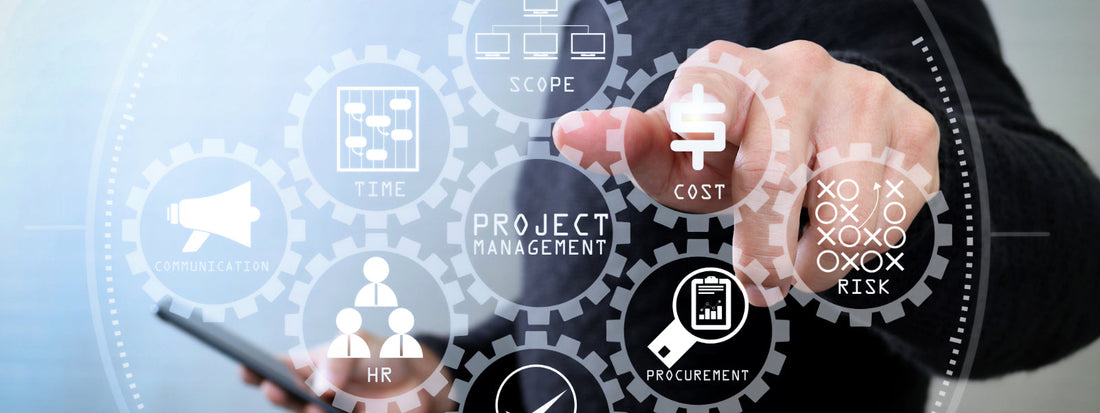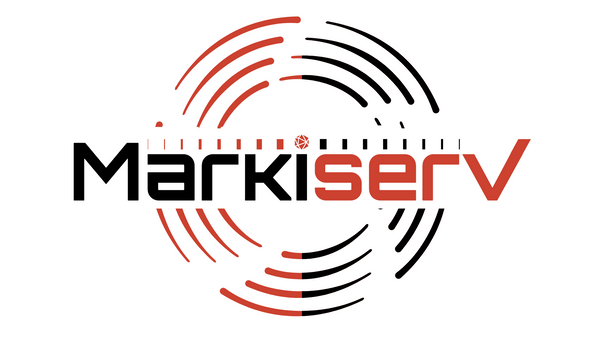
The Importance of Combining Project Management and Graphic Design in Business
Share
Introduction: Why Project Management and Graphic Design Must Work Together
In today’s highly competitive business landscape, branding and visual communication are more important than ever. Companies of all sizes rely on graphic design to create compelling marketing materials, user-friendly websites, engaging social media content, and powerful branding assets. At the same time, they need project management to ensure that these creative efforts are executed efficiently, within budget, and in alignment with broader business goals.
Despite their importance, graphic design and project management are often treated as separate disciplines, leading to inefficiencies, miscommunication, and wasted resources. Businesses may find themselves in situations where creative teams produce stunning visuals that fail to meet strategic objectives, or where project managers struggle to keep up with the unique needs of designers who thrive in flexible, iterative workflows rather than rigid schedules.
This disconnect is particularly problematic in small and medium-sized businesses (SMBs), where resources are often limited, and every marketing dollar must be maximized. Without proper project management, a design project can spiral out of control, leading to missed deadlines, scope creep, and unnecessary expenses. Conversely, without the freedom and flexibility to explore creative solutions, design teams can become bogged down by excessive administrative tasks, stifling innovation.
Why Graphic Design and Project Management Must Be Integrated
The key to success is integrating graphic design and project management into a seamless workflow. When these disciplines work in harmony, businesses can achieve:
✔ Faster turnaround times – Structured project management ensures that design projects progress smoothly without unnecessary delays.
✔ Stronger brand consistency – Designers working within an organized framework can create cohesive, on-brand visuals that align with a company’s mission and voice.
✔ Better collaboration between teams – Marketing, product development, and executive leadership all rely on design; proper coordination ensures that everyone’s needs are met efficiently.
✔ More cost-effective campaigns – By setting clear goals and expectations, businesses can avoid excessive revisions and wasted design hours.
One of the biggest challenges businesses face is bridging the gap between structured project management and the creative process. Unlike other business functions, design work is non-linear and highly iterative—meaning it requires flexibility to allow for brainstorming, experimentation, and refinement. However, without timelines, milestones, and accountability, projects can quickly fall behind schedule, causing bottlenecks that disrupt other business operations.
Who Benefits from a Stronger Graphic Design and Project Management Workflow?
While many assume that only large corporations need structured design management, the reality is that businesses of all sizes can benefit from integrating project management principles into their design workflows. Here’s how different types of businesses stand to gain:
📌 Small Businesses & Startups
For startups and small businesses, every piece of content matters. A single social media post, website update, or marketing campaign can determine success or failure. With limited budgets and small teams, these businesses cannot afford inefficiencies. A well-structured project management approach ensures that every design effort is strategic, timely, and high-impact.
📌 Marketing Agencies & Creative Teams
Agencies and internal creative teams handle multiple projects at once, often juggling tight deadlines and client expectations. Without project management, chaos ensues—deadlines are missed, clients become frustrated, and designers become overwhelmed. Integrating project management allows agencies to scale operations efficiently while maintaining quality and client satisfaction.
📌 Large Enterprises & Corporations
Larger businesses manage multiple marketing channels, ad campaigns, and branding initiatives at the same time. In these settings, design consistency across all platforms is critical. Project management ensures that branding remains cohesive and that design assets are delivered efficiently across various departments and teams.
Regardless of industry or business size, companies that integrate project management into their design processes see better results. By creating structured workflows, clear timelines, and efficient collaboration systems, businesses can unlock the full potential of their design teams while ensuring that projects remain on track.
What This Guide Covers
In this blog post, we will explore:
✅ The role of project management in graphic design and why structure is essential for creative projects.
✅ How graphic design supports project success, improving branding, communication, and audience engagement.
✅ Common challenges businesses face when these two functions are not properly aligned.
✅ Best practices for integrating project management and graphic design to maximize business impact.
By the end of this guide, you will have a clear understanding of why businesses need to merge creativity with structure and how to implement strategies that will improve efficiency, increase ROI, and enhance brand consistency. Whether you’re a business owner, project manager, or designer, you’ll gain actionable insights to help your team create high-quality, impactful designs that drive real results.
The Role of Project Management in Graphic Design
1. Keeping Creativity on Track with Clear Deadlines
Graphic design is an iterative process that requires time for brainstorming, revisions, and approvals. Without a structured approach, projects can drag on indefinitely, leading to delays, missed opportunities, and frustration.
Project management ensures that every design project has:
✔ Defined milestones (e.g., concept approval, first draft, final revisions)
✔ A realistic timeline that keeps everyone accountable
✔ A workflow that prevents bottlenecks and last-minute rushes
For example, if a company needs a new website design, project management helps break down the process into clear steps—wireframing, prototyping, user testing, and final implementation—ensuring the launch happens on schedule.
2. Budget Management: Avoiding Costly Design Revisions
Scope creep—when a project’s requirements expand beyond the original plan—is a major issue in design projects. Without proper management, a simple logo design project can turn into a full brand identity overhaul, draining resources and delaying other initiatives.
A project manager helps:
✔ Set clear expectations for deliverables
✔ Allocate resources efficiently to avoid unnecessary expenses
✔ Ensure that designers focus on high-priority tasks rather than endless revisions
3. Facilitating Collaboration Between Designers and Other Teams
Graphic designers often work with marketing teams, developers, content creators, and executives. If there’s no system in place for collaboration, miscommunication can lead to inconsistent branding, design delays, and wasted efforts.
Project management tools like Trello, Asana, Monday.com, and ClickUp provide structured workflows that allow:
✔ Marketing teams to submit clear design requests
✔ Designers to track their tasks and deadlines
✔ Executives to approve or provide feedback in one place
With proper project management, designers can focus on being creative rather than getting lost in email chains and scattered requests.
The Role of Graphic Design in Project Management Success
1. Visual Communication Enhances Productivity
Project management is data-driven, but numbers and text-heavy reports aren’t always engaging. Graphic design helps by:
✔ Turning complex data into visual dashboards (e.g., infographics, charts)
✔ Making project presentations more compelling
✔ Ensuring that internal communications (e.g., company reports, training materials) are clear and engaging
A well-designed project timeline or status report is easier to understand and act upon than a long email filled with bullet points.
2. Strengthening Brand Consistency Across All Projects
Every business project—whether launching a new product, creating an ad campaign, or revamping a website—needs to align with the company’s brand identity.
Graphic design ensures that:
✔ Logos, colors, and typography remain consistent across all touchpoints
✔ Marketing materials match the company’s tone and style
✔ Visual storytelling supports the overall project goals
Without graphic design, a project might be well-executed but fail to resonate with the audience due to poor branding and lack of visual appeal. DesignRush does a fantastic job of combining strong work capability with project management in this case.
3. Engaging Stakeholders and Clients More Effectively
Design plays a huge role in how businesses present ideas to stakeholders, investors, and clients. Well-designed reports, presentations, and mockups make it easier to:
✔ Persuade decision-makers to approve a project
✔ Showcase progress and results visually
✔ Gain customer trust through polished, professional-looking materials
For example, when pitching a new advertising campaign, a visually compelling presentation with mood boards and mockups will be far more persuasive than a plain text document.
Challenges Businesses Face When These Functions Are Disconnected
Despite the benefits of integrating project management and graphic design, many businesses still struggle with:
❌ Lack of clear roles – Designers are expected to manage projects without training, or project managers don’t understand creative workflows.
❌ Poor communication – Marketing teams send vague requests, leading to unnecessary revisions.
❌ Missed deadlines – Without structured workflows, design projects often take longer than expected.
❌ Inconsistent branding – Designs created without brand guidelines result in a fragmented visual identity.
Solving these issues requires intentional collaboration and the right tools.
Best Practices for Combining Project Management and Graphic Design
💡 1. Use Project Management Tools Built for Creative Teams
Platforms like Monday.com, Wrike, and ClickUp allow businesses to track projects visually while giving designers the flexibility they need.
💡 2. Establish a Clear Creative Briefing Process
A structured design request form helps avoid confusion by outlining:
✔ Project goals
✔ Brand guidelines
✔ Deliverable formats and deadlines
💡 3. Set Realistic Deadlines with Buffer Time
Creative work is iterative, so building in time for feedback and revisions prevents last-minute stress.
💡 4. Have Regular Check-Ins Between Designers and Project Managers
Weekly or biweekly meetings ensure that projects stay on track and that designers receive the support they need.
💡 5. Train Designers in Project Management Basics
Teaching designers how to break down tasks, estimate time, and manage their workload leads to smoother, more efficient projects.
Final Thoughts: Why Businesses Must Align Project Management and Graphic Design
Graphic design and project management are two sides of the same coin—one fuels creativity, and the other ensures execution. Businesses that fail to integrate them often experience delays, inconsistencies, and wasted resources.
By embracing structured workflows, collaborative tools, and clear communication, companies can elevate their branding, improve efficiency, and create high-impact designs that drive business growth.
If you're a business owner, marketing leader, or creative professional, now is the time to prioritize the fusion of project management and graphic design. Doing so will not only enhance the quality of your design work but also maximize its impact on your bottom line.
Helpful Resources:
📌 Monday.com – Project Management for Creative Teams
📌 ClickUp – Manage Design Workflows
📌 Canva – Design Tool for Businesses
📌 Adobe Creative Cloud – Industry-standard tools for professional design
By combining creativity with structure, your business can achieve efficiency, brand consistency, and lasting success. 🚀
